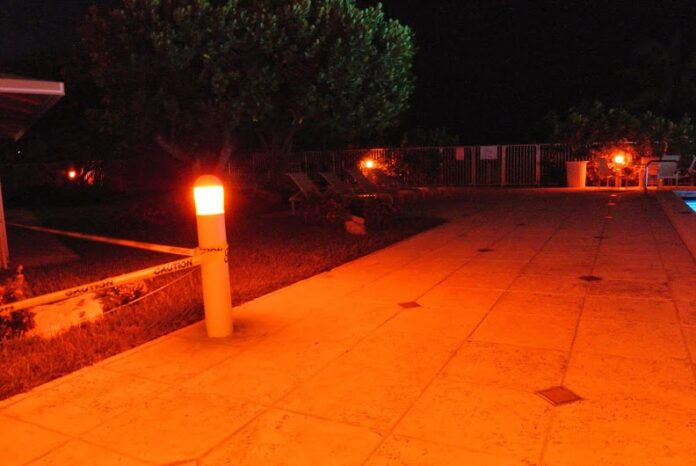Light pollution, or an excessive amount of artificial light in the environment, can alter animals’ natural instincts and cause detrimental disturbances on many ecosystems. In coastal locations, it can cause newly-hatched sea turtles to orient away from the ocean where they’re inevitably killed. Fortunately, many coastal locations have minimum standards that require wildlife-friendly lighting.
Amber LED lamps are a specific wavelength of 590 nanometers, which is not visible to most animals affected by light pollution. Humans can see wavelengths between 400 and 750 nanometers. This enables humans to safely move about at night without disturbing sensitive ecosystems.
Wildlife-friendly amber LED lamps appear to be the same color as lamps with a low Kelvin temperature. Does this mean a low Kelvin temperature is wildlife friendly? No! Amber LED lamps are more than what meets the eye. They are measured in nanometers, not in a specific Kelvin temperature. Kelvin and nanometers do not measure the same thing and cannot be converted. But what’s the difference?
Kelvin temperature indicates the perceived color of a light source and generally range from 1000k to 8000k. The higher the temperature, the bluer the light will appear. The lower the temperature, the warmer the light will appear. A certain Kelvin temperature consists of a nearly infinite number of wavelengths to produce the perceived color.

Nanometers, on the other hand, measure a specific wavelength. So even if the Kelvin temperature appears amber, it’s actually a combination of wavelengths at different nanometers. Some of these wavelengths may be visible to wildlife affected by light pollution. Consequently, a lamp with a low Kelvin temperature would not necessarily be an effective wildlife-friendly light source.

It is important to check with local ordinances to identify the species it focuses on and the nanometer of light required.



